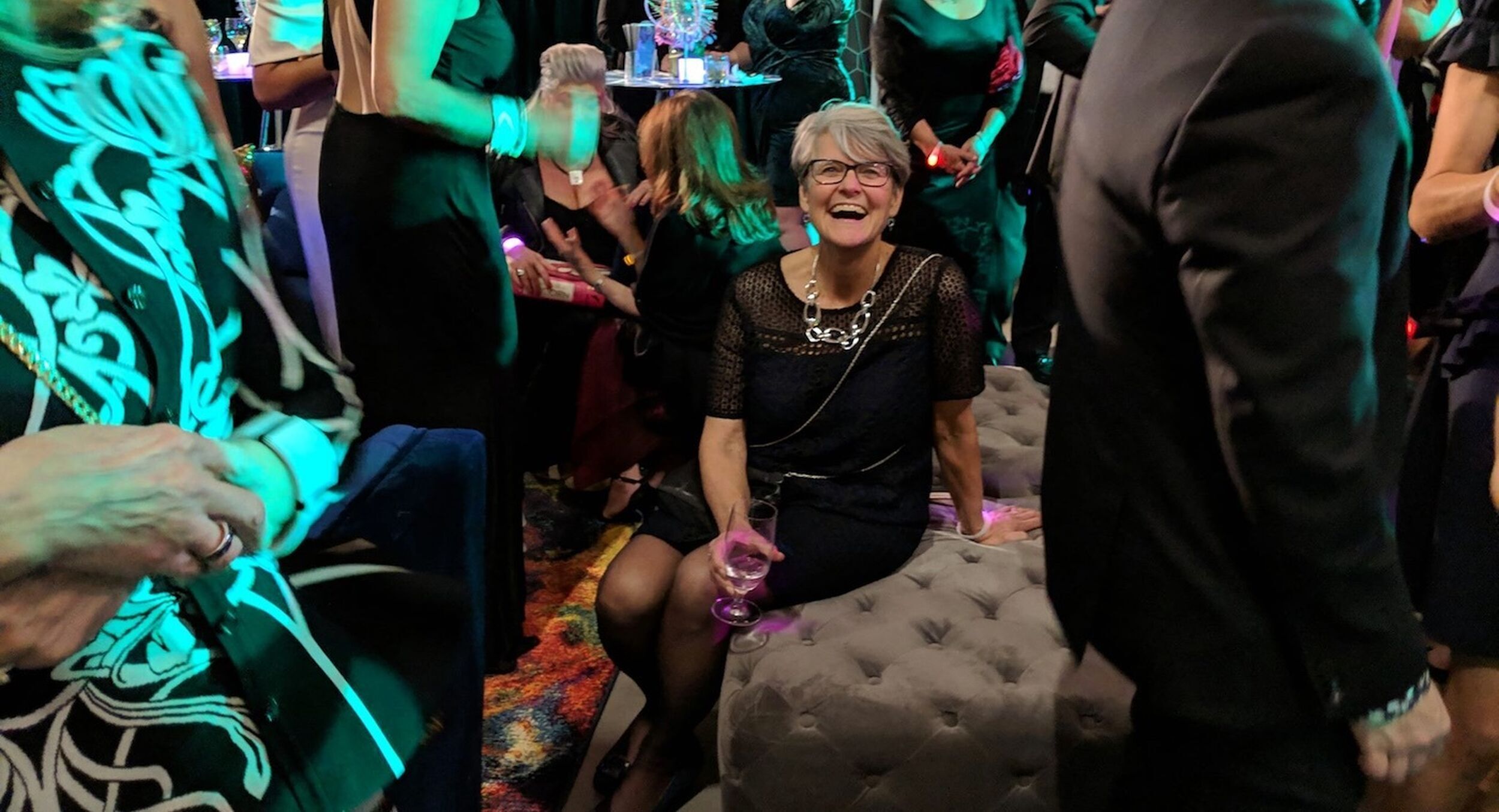
Photo: Mike Morrison
Cheri Macaulay, 1962 – 2019
Calgary’s relentless optimist.
Cheri Macaulay believed that small acts of neighbourliness have big impact. She believed that one person could inspire a community.
You are reading this today because she was right.
Before she left her indelible mark on Calgary, Cheri grew up in Ontario. Throughout her childhood, her family hopped from one small town to another thanks to her father’s job with a food vending company. During high school, in Tilbury, Ont., Cheri took to theatre and the comic operas of Gilbert and Sullivan.
She studied mathematics at Queen’s University in Kingston where she met her future husband, Rob Macaulay. Mid-way through her degree, Cheri took a summer job with Dome Petroleum in Calgary, which drew her west and led to a permanent job. She finished her degree by taking night courses at the University of Calgary.
In 1987, after they got married, Cheri and Rob bought a house in the postwar neighbourhood of Brentwood in the city’s northwest. This became home base for Cheri’s community-building conspiracies. As a young mother, she published a guerrilla, ad-hoc newsletter, called the Brentwood Blab, with local scuttlebutt and info on neighbourhood kids’ groups. She’d print it off in the basement, then go down the street and stuff it into neighbours’ mailboxes.
With Cheri, everything always seemed to spill out onto the street.
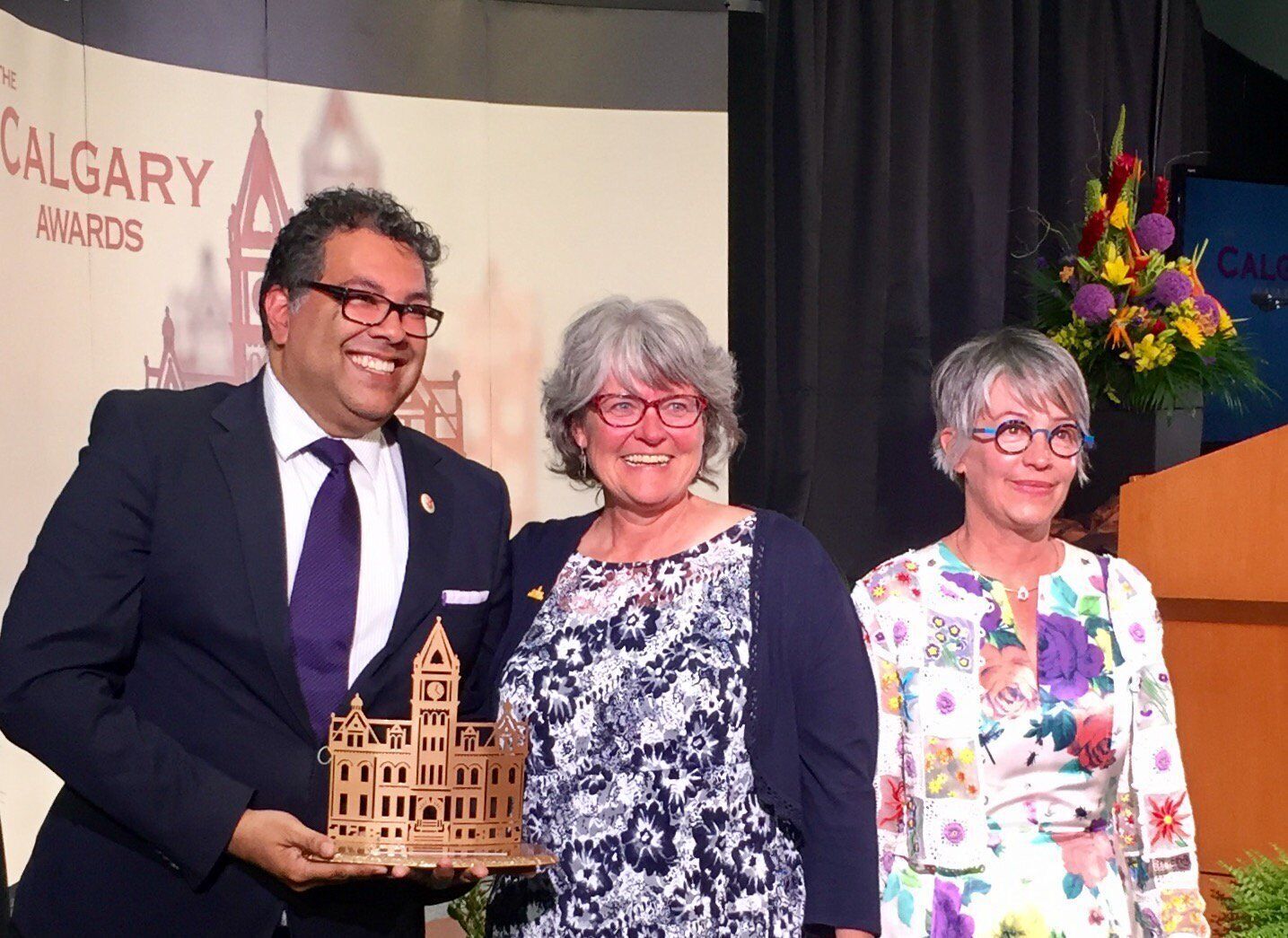
In the early 1990s, the family moved to Oman for Rob’s work. Cheri insisted that they not live among other expats, as was convention, but in community alongside Omanis. She struggled to build connections in their new neighbourhood, but one neighbour befriended Cheri and introduced her to others. In this relationship, Cheri saw the difference that a single connection can make.
When the Macaulays returned to Calgary in 1996, Cheri found herself at home—but also a stranger, having been away for almost half a decade. She resolved to stay with her two boys, Michael and Graham, rather than returning to work. She’d worked in the oilpatch and as a graphic designer, but these jobs ultimately didn’t hold her interest. She wanted something more.
Community, she realized, was her vocation.
In the mid-2000s, Cheri spearheaded a youth mural project on an often-graffitied brick wall at the corner of Brisebois Dr. and Northmount Dr. N.W. She was artist, assistant and organizer, guiding the local kids who were contributing. The project culminated in a neighbourhood street party to celebrate the work—a gathering that became an annual Brentwood tradition. The first street party had about 50 people. Within five years, it was more like 500.
As always with Cheri, one project led to another. She organized more murals at Dr. E. W. Coffin elementary school, and then inside the Nose Hill Library. For Cheri, the murals weren’t just a neighbourhood beautification project. For her, a splash of colour, lovingly applied, created a sense of community. When people went by and saw children painting, or viewed the completed work, they got a message: these kids care.
She wanted kids to believe in the value of community building. “I think it’s really important to keep making connections like that in your community, whether it’s in your school or your neighbourhood or your city,” she told the children at the local elementary school.
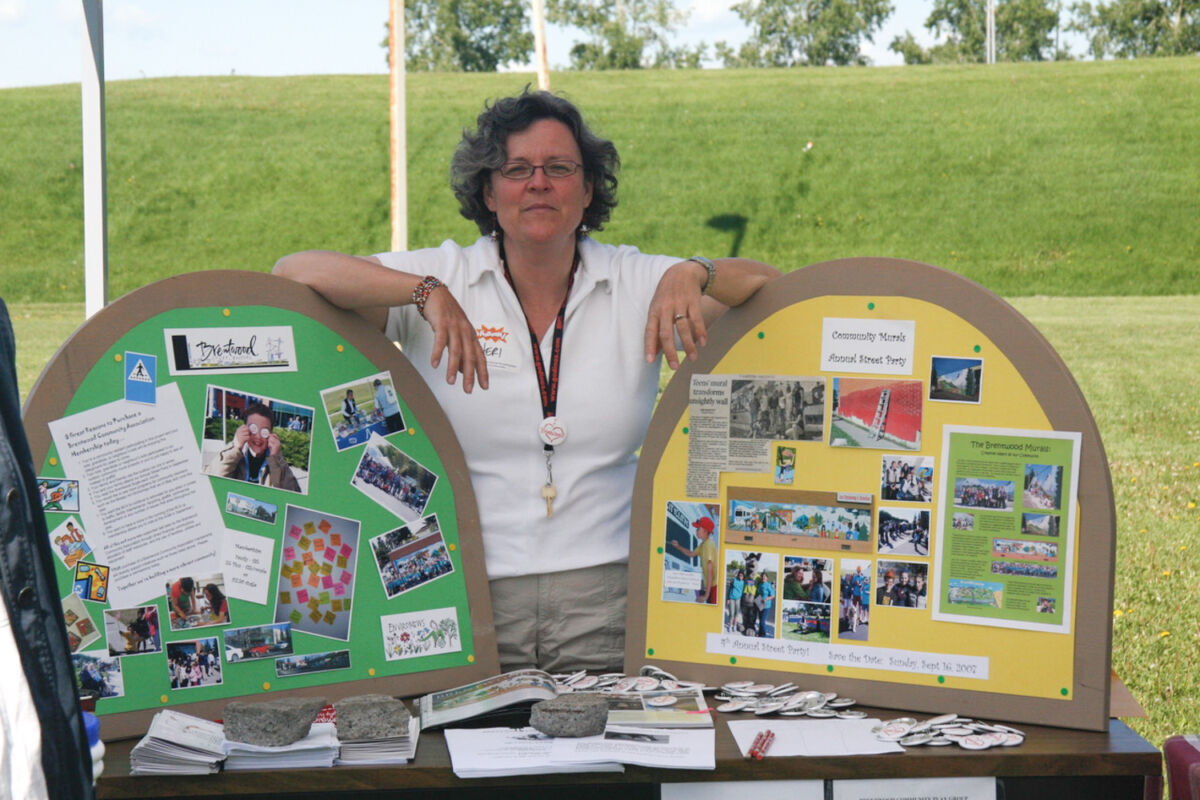
When the Macaulays renovated their house, Cheri insisted on having a front porch, even though their street was largely porchless. She believed their porch would change the nature of the street. She was right. On summer nights, people would stop by to say hello and introduce themselves, to Cheri’s delight. And then other porches started to show up on their street.
Cheri believed fiercely that people in a neighbourhood should know each other. To this end, she was part of a weekly Brentwood project called MONday — or “Meet Our Neighbours Day.” The idea was that people in the neighbourhood would get out of their houses and go for walks at the same time on Monday evening, specifically to see their neighbours and be seen by them.
They’d walk with the goal of encountering strangers, looking them in the eye and saying hello. Then they’d give a MONday card to whomever they met and urge them to pass it on to another stranger — and so on.
Over time, people made a habit of the weekly walk. Community grew, neighbour by neighbour. People even came from outside the neighbourhood to be part of it.
In 2012, Cheri inadvertently started a micro-urbanist movement in Calgary. She’d read online about something called a Little Free Library: a wooden box on a post, painted and stuffed with books. Anyone could take a book or leave one. Hosting a Little Free Library meant strangers would stop and poke around your front yard instead of hurrying by—the very thing Cheri believed we need more of.
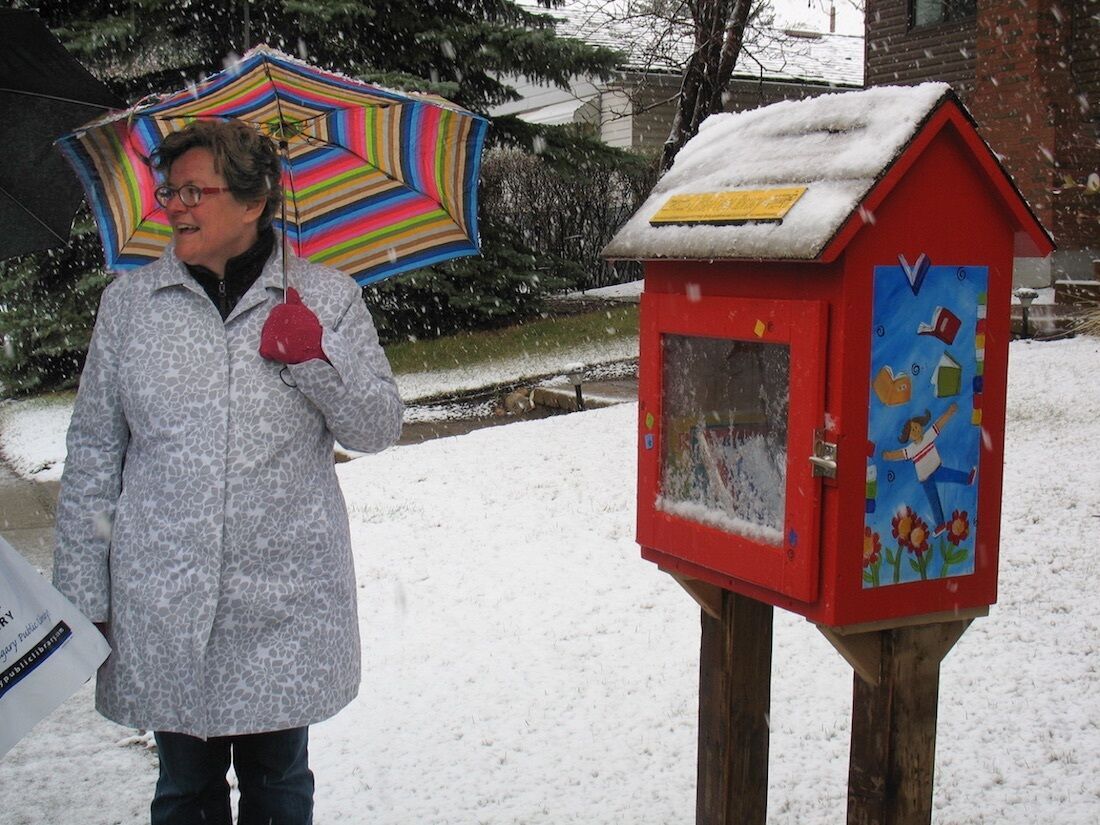
Rob was initially skeptical, but he agreed to a red Little Free Library by the tree in their front yard. Sure enough, people stopped to rummage through it. Some rang the doorbell to ask about it. Someone started curating the Macaulays’ library without being asked. Most importantly for Cheri, the Little Free Library got people swapping books and talking to each other in front of the house.
CTV did a story on the Macaulays’ Little Free Library, and it took off. Soon Little Free Libraries started popping up all over the city.
When they sold the house to move to East Village in 2016, the Macaulays made sure that the buyer would keep the Little Free Library. It was written into the contract.
Cheri’s Little Free Library is still there today.
As a community activist, Cheri celebrated what was good in her city and neighbourhood. But she also identified what needed change and got to it, whether she was helping organize a women’s march or volunteering on a friend’s political campaign.
She was not interested in being a bystander.
As a member of the Brentwood Community Association board, she pushed for transit-oriented development by the nearby CTrain station, as well as amenities like a new playground and community garden.
She got involved in city politics by working on the campaigns of her friend, Councillor Druh Farrell. In 2009, she helped launch a citizens’ advocacy group, CivicCamp, together with local author Chris Turner and Mount Royal University professor Naheed Nenshi, among others. Born over cups of coffee at Higher Ground in Kensington, CivicCamp became an influential force after a founding “unconference” in the gymnasium of Knox United Church.
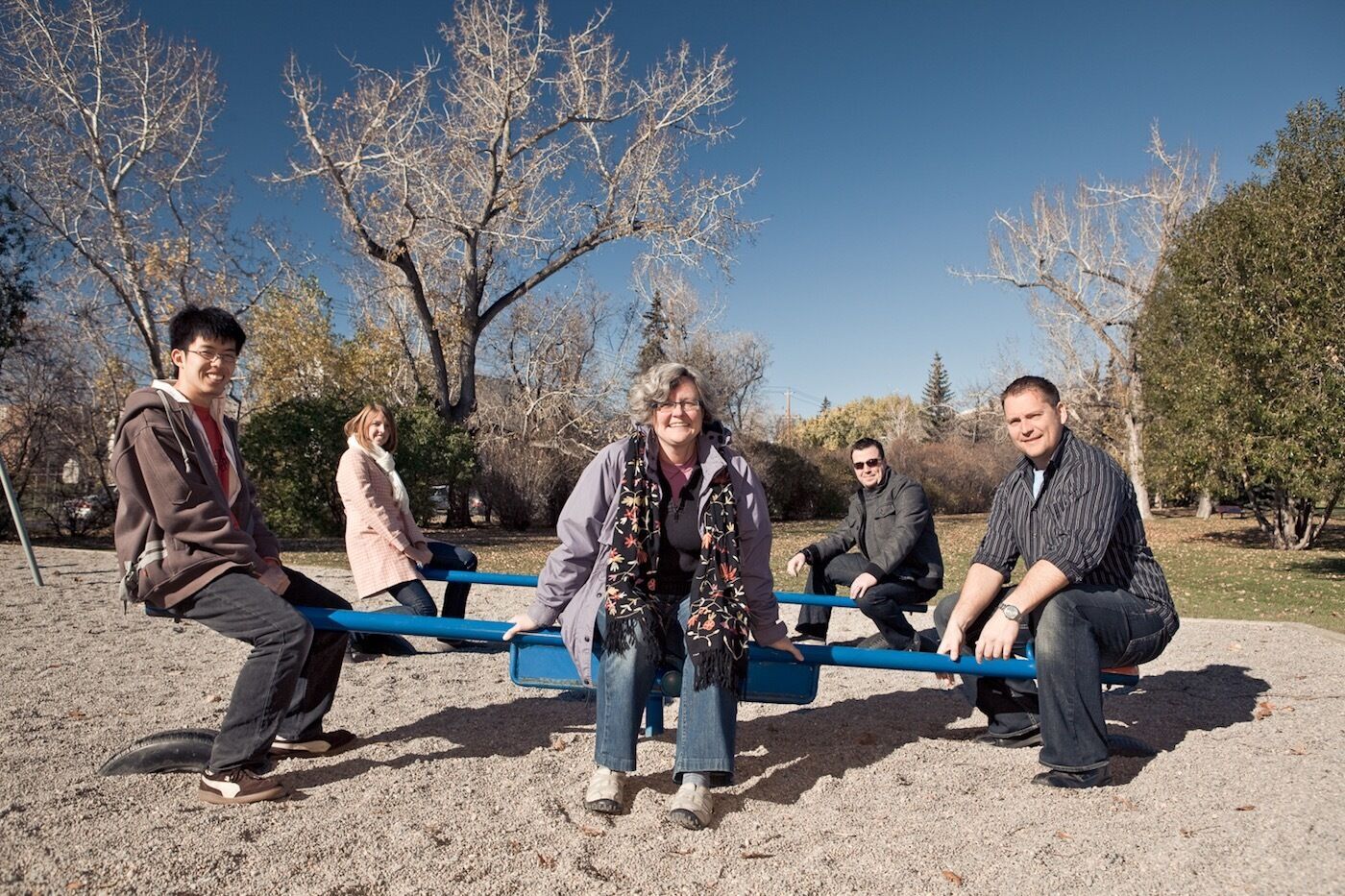
“We don’t want it to be somebody’s baby,” Cheri told Swerve magazine. “Nobody is in charge. That makes it messy as all get out.” Cheri was the soul of the CivicCamp movement, setting the tone for others.
CivicCampers were interested in transit, urban planning and advocating at a city hall long dominated by developers. They galvanized around Plan It, Calgary’s long-range growth blueprint, which aimed to curb new growth from spilling further onto the prairie.
“If you have to get in your car to go everywhere, then what have we got?” Cheri wondered, in a 2009 interview.
But she also cautioned against pitting parts of the city against each other, keeping her focus on a better city for all.
In the cynicism and rancour of politics, Cheri stood out as a relentless, radical optimist. When a CBC reporter approached CivicCamp in 2009, hoping to interview someone about dysfunction at city council, Cheri suggested a different tack. “What if we turn it on its head and dodge the whole dysfunctional council storyline?” she said. “Focus instead on grassroots community projects that are succeeding with the support of council.”
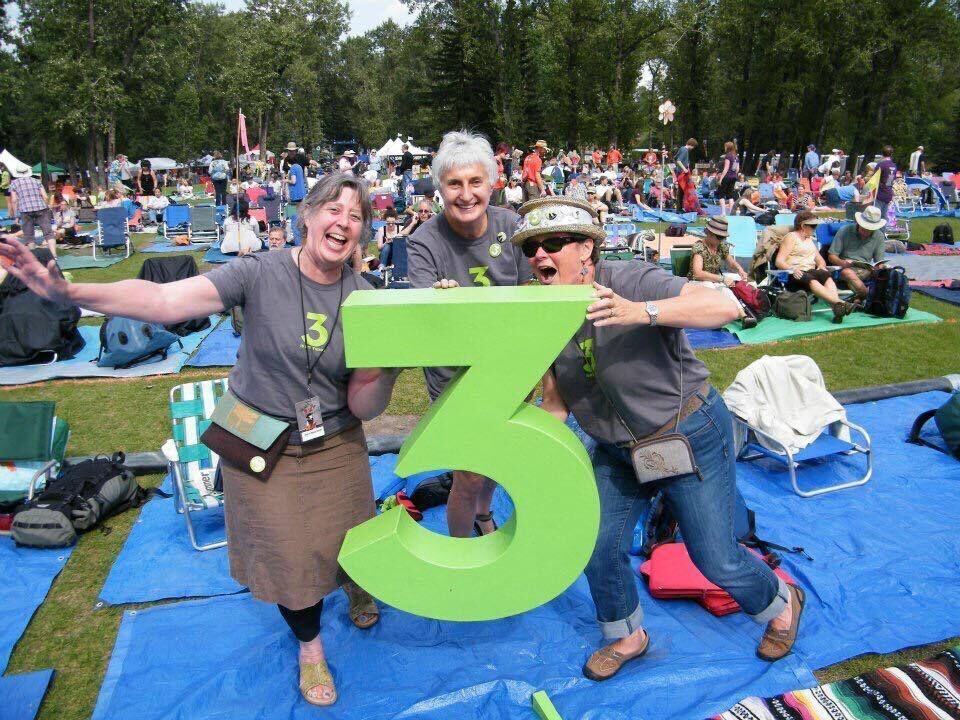
After the election of Mayor Naheed Nenshi in 2010, Cheri helped launch an effort called 3 Things for Calgary. The premise was classically Cheri, something very simple with outsized impact: Think of 3 things you can do for your city. Go do them. And then tell somebody else about it, encouraging them to do the same.
In other words: pass it on.
Cheri ran her unofficial offices out of Calgary’s cafes and parks, meeting with people who had ideas in need of a home. “It’s magic,” was one of her phrases. And another: “You must keep going,” to anyone whose energy began to falter. She’d give a big grin, chin up, to things that delighted her—local theatre and birds, kind acts and music. “Stay grounded,” she’d say.
After she was diagnosed with cancer in early 2017, she sought her own path through treatment, one in which, in her words, hope would be allowed to grow in spite of the odds. Here, too, she saw a need for community and set out to build one. It was her wish that everyone with this disease receive the unique care that allows them to live their best life.
The mathematics grad pushed statistics and probabilities to the side, and said to healthcare providers: you are here to care for people, not datapoints.
In her final years, she took family and friends to one of her favourite spots on St. Patrick’s Island to stand still and feed chickadees. She read Mary Oliver’s poems and went for walks, greeting people like she always had. And she found wonder in the small, quiet things of life: a blue sky, a bird in hand, a family of owls by the river.
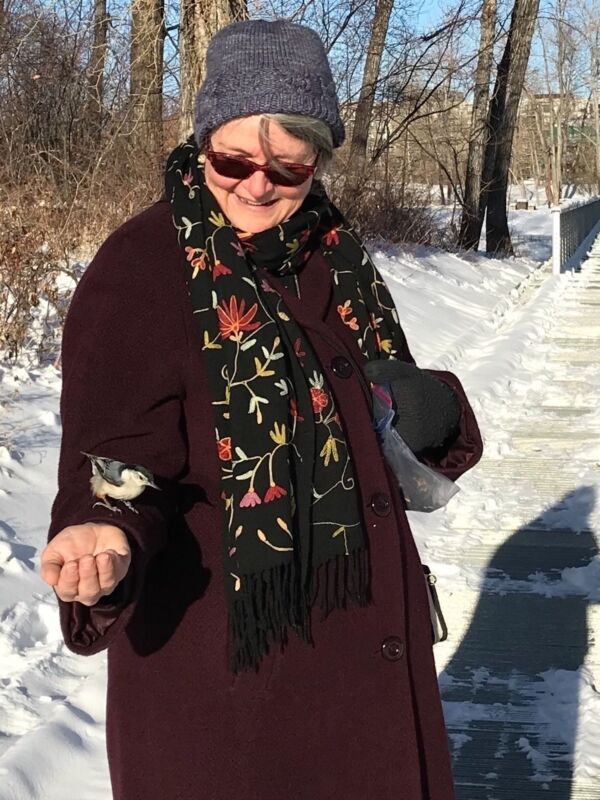
Her greatest source of wonder, through everything, was her family. To be with her sons and Rob, particularly outside under a night sky aglow with Northern Lights—that was her favourite kind of magic.
Reflecting on Cheri’s life, Rob recalled something that Robert Kennedy once said about how we often undervalue what matters most. Kennedy was speaking about GDP (gross domestic product) and how it doesn't capture what gives life its purpose.
It measures neither our wit nor our courage, neither our wisdom nor our learning, neither our compassion nor our devotion to our country; it measures everything, in short, except that which makes life worthwhile.
Cheri’s life was devoted to immeasurable things, the parts of a city that don’t show up on a ledger but make a community what it is.
Jeremy Klaszus is editor-in-chief of The Sprawl. Christina Frangou is a Calgary journalist who covers health and social issues.
Support in-depth Calgary journalism.
Sign Me Up!We connect Calgarians with their city through in-depth, curiosity-driven journalism—but can't do this alone! We rely on our readers and listeners to fund our work. Join us by becoming a Sprawl member today!
